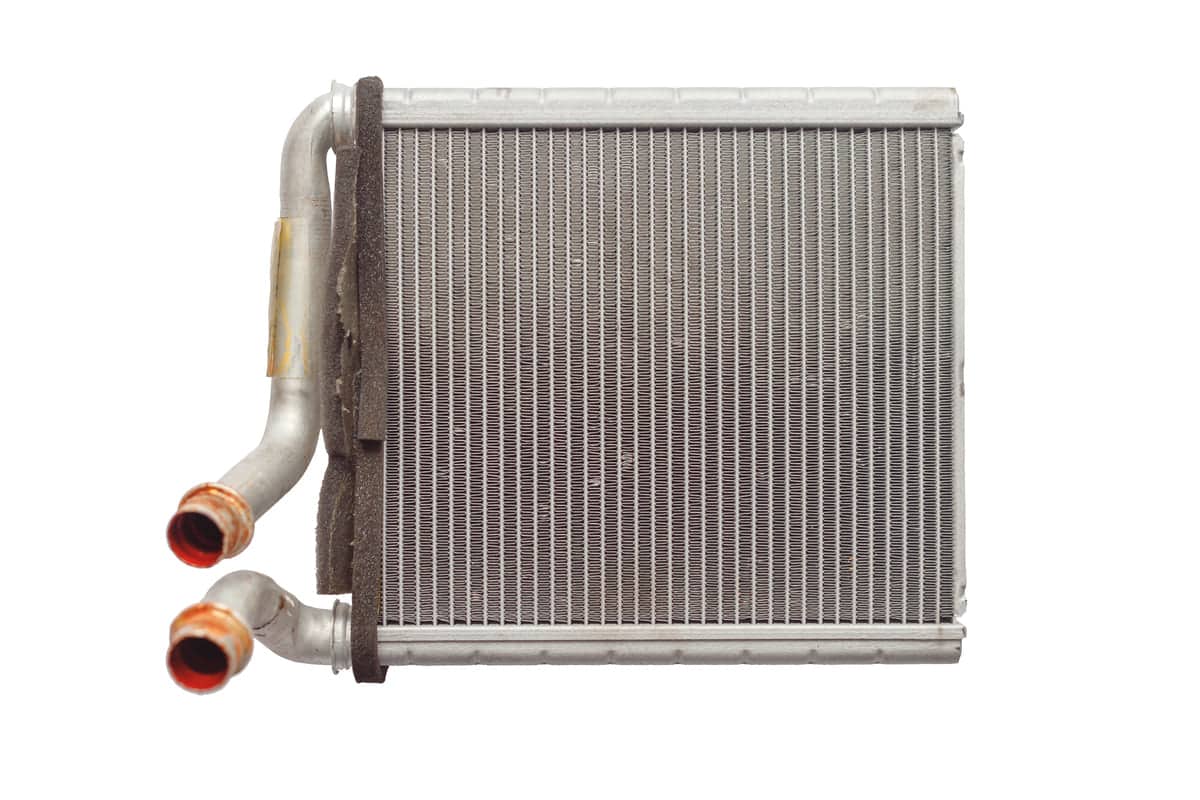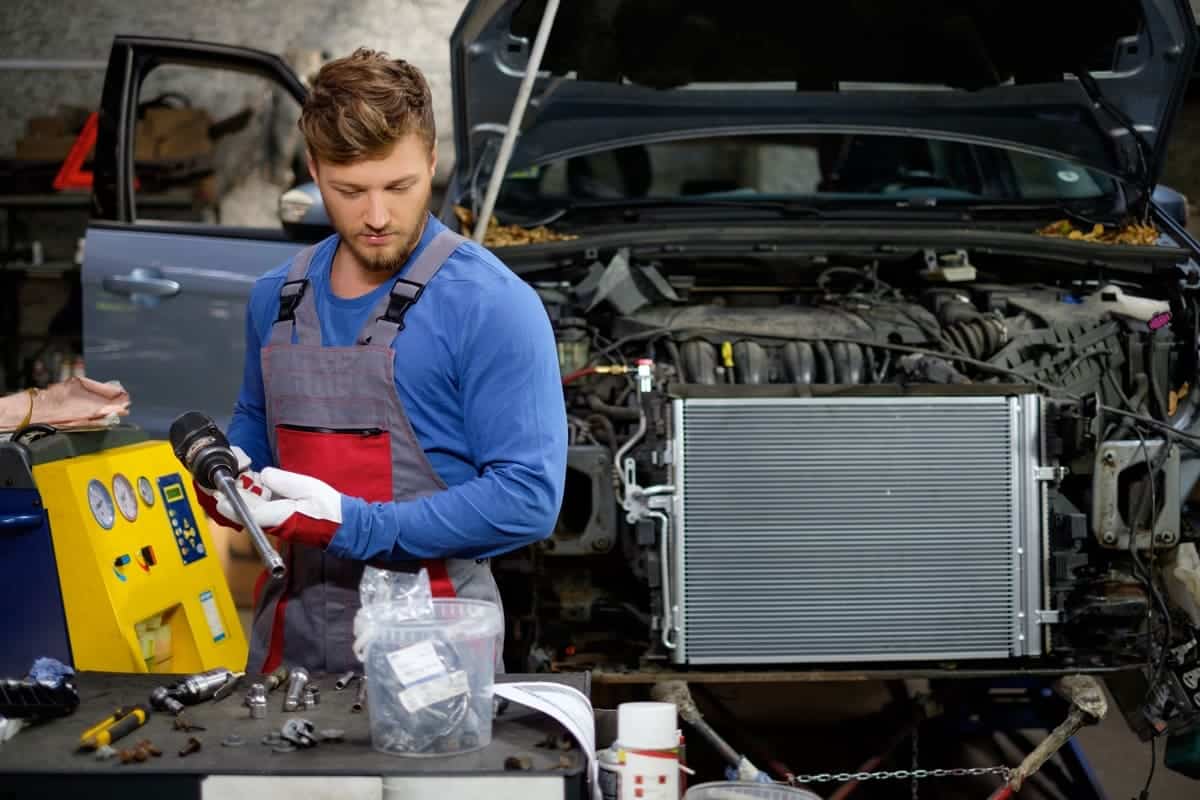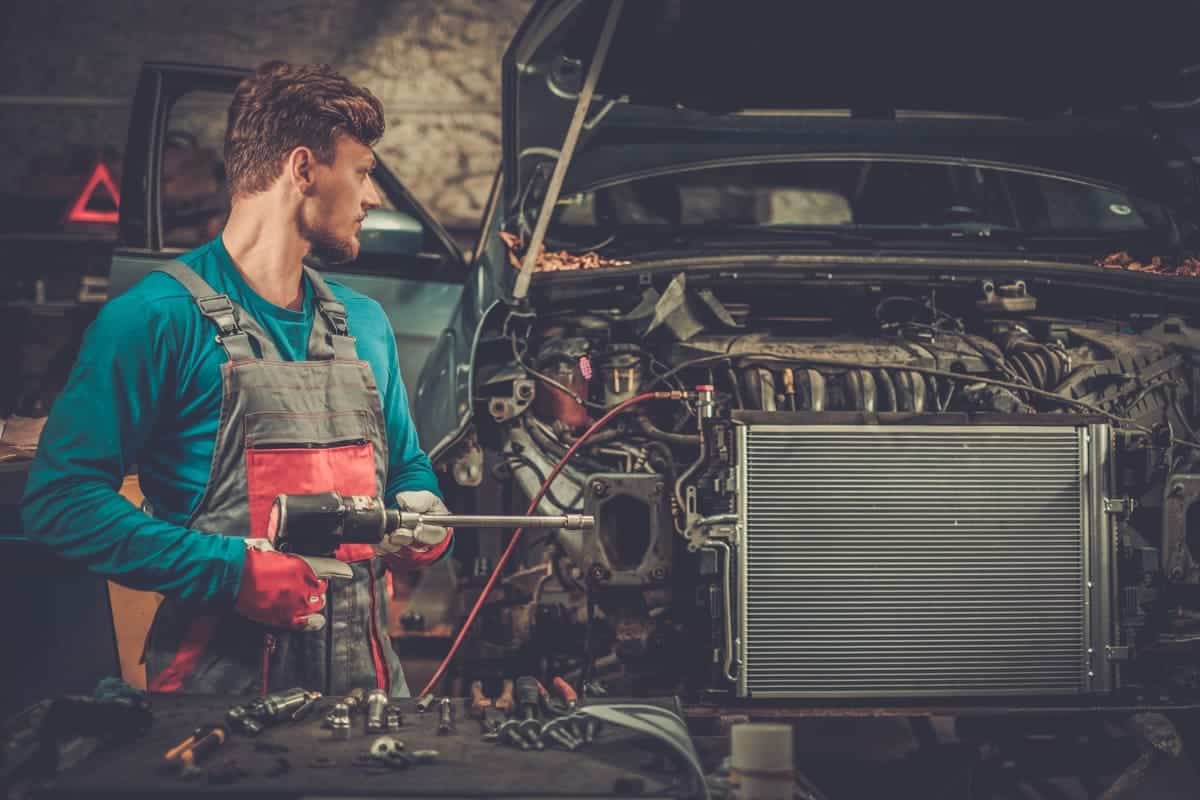Radiators work by circulating coolant through their internal channels, absorbing engine heat. The heated coolant then passes through fins or tubes exposed to air and dissipates the heat. A good radiator is key to preventing damage and longevity.
What is a Radiator in a Car?
A radiator in a car is a part of the engine cooling system. It manages engine temperature by dissipating heat. Radiators prevent the engine from overheating which can cause severe damage. Maintenance includes checking coolant levels and looking for leaks. Make sure the radiator cap seals properly to maintain pressure.
Flushing the radiator periodically removes contaminants. This keeps the cooling system running smoothly. Radiators are key to engine performance and longevity. It keeps the engine within a safe temperature range so the vehicle can run reliably.
References
- Radiator (engine cooling). Wikipedia. Retrieved from
- Radiators. Universal Technical Institute. Retrieved from
How Car Radiator Works?
A car radiator works in a step by step cooling process. First, the coolant absorbs heat from the engine as it circulates. Then the heated coolant flows into the radiator through hoses.
Inside the radiator, the coolant travels through thin tubes. Metal fins attached to these tubes increase the surface area for heat dissipation. A fan behind the radiator pulls air through these fins.
As air passes through the fins, it removes heat from the coolant. The cooled coolant then exits the radiator and goes back to the engine through another hose. This cycle repeats itself as the engine runs.
The radiator cap maintains system pressure, raises the coolant’s boiling point. This makes the coolant effective at higher temperatures. Understanding this process helps in preventing engine overheating and ensures vehicle reliability.

What are the Main Parts of a Car Radiator?
Here are the main parts of the car radiator:
- Core: The core is the middle part of the radiator. It has rows of thin tubes and metal fins. Coolant flows through these tubes and the fins increase surface area for heat dissipation.
- Tanks: There are two tanks, usually located on the sides or top and bottom of the core. These tanks hold the coolant before it enters and after it exits the core.
- Hoses: Hoses connect the radiator to the engine. The upper hose carries hot coolant from the engine to the radiator, while the lower hose returns the cooled coolant back to the engine.
- Radiator Cap: The radiator cap maintains pressure in the cooling system. It raises the boiling point of the coolant and prevents it from boiling over at higher temperatures.
- Thermostat: The thermostat regulates coolant flow into the radiator. It opens when the engine reaches a certain temperature, and allows hot coolant to enter the radiator for cooling.
- Cooling Fan: The cooling fan pulls air through the radiator’s fins. This increases the cooling process by increasing airflow over the heated parts.
- Cooler: Some radiators have an integrated transmission cooler. It keeps the transmission fluid at a safe operating temperature so the transmission runs smoothly.
These parts work together to keep the engine at the right temperature, prevents overheating and run smoothly.
References
- How an Engine Cooling System Works. How a Car Works. Retrieved from
What Fluids are in a Car Radiator?
Different types of fluids in car radiator:
- Coolant/Antifreeze: Coolant, often called antifreeze, flows through the radiator. It absorbs engine heat and prevents freezing in cold temperatures. Typically it is a mix of water and ethylene glycol or propylene glycol.
- Water: Water is a part of the coolant. It transfers heat well but lacks antifreeze properties. Always mix it with antifreeze to prevent boiling and freezing.
- Hybrid Organic Acid Technology (HOAT): HOAT coolants combine organic acids with traditional inhibitors. They provide long term protection against corrosion and scale buildup.
- Organic Acid Technology (OAT): OAT coolants uses organic acids for corrosion protection. They provides extended life but are not compatible with older vehicle systems.
- Inorganic Acid Technology (IAT): IAT coolants contain silicates and phosphates. They are suitable for older vehicles and provide excellent short term protection but require frequent change.
- Silicated HOAT (Si-HOAT): Si-HOAT coolants have silicate additives for additional protection. They are commonly used in European car models.
Use the recommended fluid for your vehicle for optimal performance and protection.
References
- Engine Cooling. ScienceDirect. Retrieved from
Why Radiator is Important for Car Engines?
Here are the reasons why car engine cooling is important:
- Prevents Overheating: The radiator removes heat from the engine coolant. This process prevents the engine from overheating which can cause severe damage and reduce the engine’s life.
- Maintains Optimal Temperature: The radiator keeps the engine at the right operating temperature. This ensures good performance and better fuel economy.
- Protects Engine Parts: By regulating temperature, the radiator protects critical engine parts. Excessive heat can warp and damage parts like cylinder head, pistons and valves.
- Improves Engine Performance: A working radiator contributes to overall engine performance. It allows the engine to run smoothly under all driving conditions, improves vehicle reliability.
- Ensures : An overheating engine can cause sudden breakdowns which is a safety risk. The radiator minimizes this risk by keeping the engine cool, ensuring safer driving.

Radiator (engine cooling) Facts:
Here are the quick facts:
- Purpose: The radiator cools the engine by removing heat from the coolant. Prevents overheating and runs smoothly.
- Parts: Key radiator parts are the core, tanks, hoses, radiator cap, thermostat and cooling fan.
- Coolant Mixture: Most coolants are a mix of water and antifreeze. This combination raises the boiling point and lowers the freezing point.
- Types of Coolant: IAT, OAT, HOAT, and Si-HOAT are the common types. Each type has a different protection level and lifespan.
- Maintenance: Check the coolant level regularly, inspect hoses for leaks and ensure radiator cap is working properly. This keeps the cooling system efficient.
- Thermostat Function: The thermostat regulates coolant flow to the radiator. It ensures the engine warms up fast and maintains a stable temperature.
- Cooling Fan Role: Cooling fan increases airflow over the radiator fins. This helps to remove heat more efficiently, especially at low speed or idling.
- Pressure System: The radiator cap maintains system pressure. This raises the coolant’s boiling point so it can operate at a higher temperature.
- Lifespan: A well-maintained radiator can last up to 8-10 years. Regular maintenance extends its life and ensures engine cooling.
References
- Car Radiator. Acko. Retrieved from https://www.acko.com/car-guide/car-radiator/


